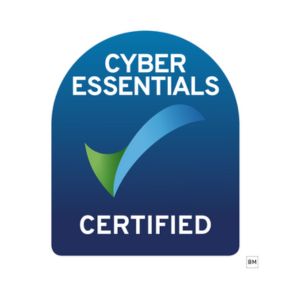1. What is a Net Promoter Score or NPS?
NPS is a KPI designed by Fred Reichheld to simplify measuring customer loyalty. Its simplicity has led to its popularity and it has been used successfully across many sectors to improve customer loyalty and fuel profitable growth.
The basis of NPS is that customers fall into three categories: Promoters, Passives and Detractors. These categories can be derived by asking one simple question – How likely is it that you would recommend [Company X] to a friend or colleague? To calculate your company’s NPS, take the percentage of customers who are Promoters and subtract the percentage who are Detractors.
- Promoters (score 9-10) are loyal enthusiasts who will keep buying and actively refer others, fueling growth.
- Passives (score 7-8) are satisfied but unenthusiastic customers who are vulnerable to competitive offerings.
- Detractors (score 0-6) are unhappy customers who can damage your brand and impede growth through negative referral.
2. How does my NPS compare to my competitors?
Scores vary widely by industry, culture etc. They are influenced by many factors so you should be cautious about making comparisons. Below is a chart of 2011 data by industry sector to give you an idea of the range of scores.
The real value comes when using NPS as a tracking tool for improving your own NPS. In my opinion absolute NPS is fairly irrelevant – it is all about improving your NPS.

One word of warning – if you’re tempted to measure your competitor’s NPS by asking your own customers to rate your competitor, be cautious! Of course this can give you a guide, but it is unlikely that your customers are representative of your competitors wider customers, they could be inherently biased. However, you could look at your relative change in NPS against your competitors change in NPS, to make sure you are increasing your Promoters at the same rate or better than your competitor e.g. if you are improving by 10% but your competitor is improving at 30%, you need to up your game.
3. How do I improve my NPS?
Essentially, you need to increase your Promoters and decrease your Detractors…but here comes the clever bit…you get them to tell you how! NPS as a single number is not going to help guide you to improve your score. The key is to ask your Passive and Detractor customers why they rate you as they do e.g. Why do you rate [Company X] as you do? What one thing could [Company X] do to make you more likely to recommend them? Then you need to take their individual comments and reduce them to a concise set of actionable insights that you can take away.
But don’t forget your Promoters! Listen to what your promoters value most e.g. What would you tell a colleague or friend about [Company X]? Then you need to look at why your Passives and Detractors don’t value this – or is it simply these benefits are not being communicated to them.
This is where the simplicity of NPS comes into its own. These are relatively straightforward concepts to communicate to your employees and for them to champion within your company.
4. Isn’t NPS just another KPI fad?
Maybe it is just another fad, but it has already been around for over a decade and has solid foundations. Reichheld arrived at this simple measure through tracking ACTUAL behaviour, not just what people say they will do. He tracked survey responses from individual customers against their actual purchasing behaviour and referral patterns over time with thousands of customers across numerous industries. They tested many different KPI questions and the questions that had the strongest statistical correlation with actual repeat purchasing and referrals was likelihood of recommendation. They also looked at NPS along with other KPIs and tracked this over time against actual company growth; they found a direct link where companies with a better ratio of Promoters to Detractors grow more rapidly than competitors.
I have heard some people argue that NPS is just another KPI and should only be measured alongside all the other customer satisfaction KPIs. However, this really defeats their purpose, especially in this day and age where survey response rates are reducing due to the plethora of lengthy DIY surveys administered. The whole point of NPS is it’s a simple, short and sweet measure of brand.
5. Is it easier to convert a Detractor or a Passive to a Promoter?
This is up for debate. There are some who believe that it is easier to promote a Passive customer to a Promoter. Passives are on the fence and might be more easily swayed. While others believe that it is easier to convert a Detractor to a Promoter. They are more vocal in their dissatisfaction so it is easier to affect them and identify improvement e.g. you get a second chance to impress them which you may not get from a Passive who you are unlikely to hear from again. The customer is often so surprised about the swift response and action taken that they respond positively and tell others.
Overall, NPS is a great tool and has been used successfully to fuel profitable growth over the last decade, but it’s all about using it effectively. If you have any comments, thoughts or questions about Net Promoter Scores then please get in touch with the Zing team.
Jo








